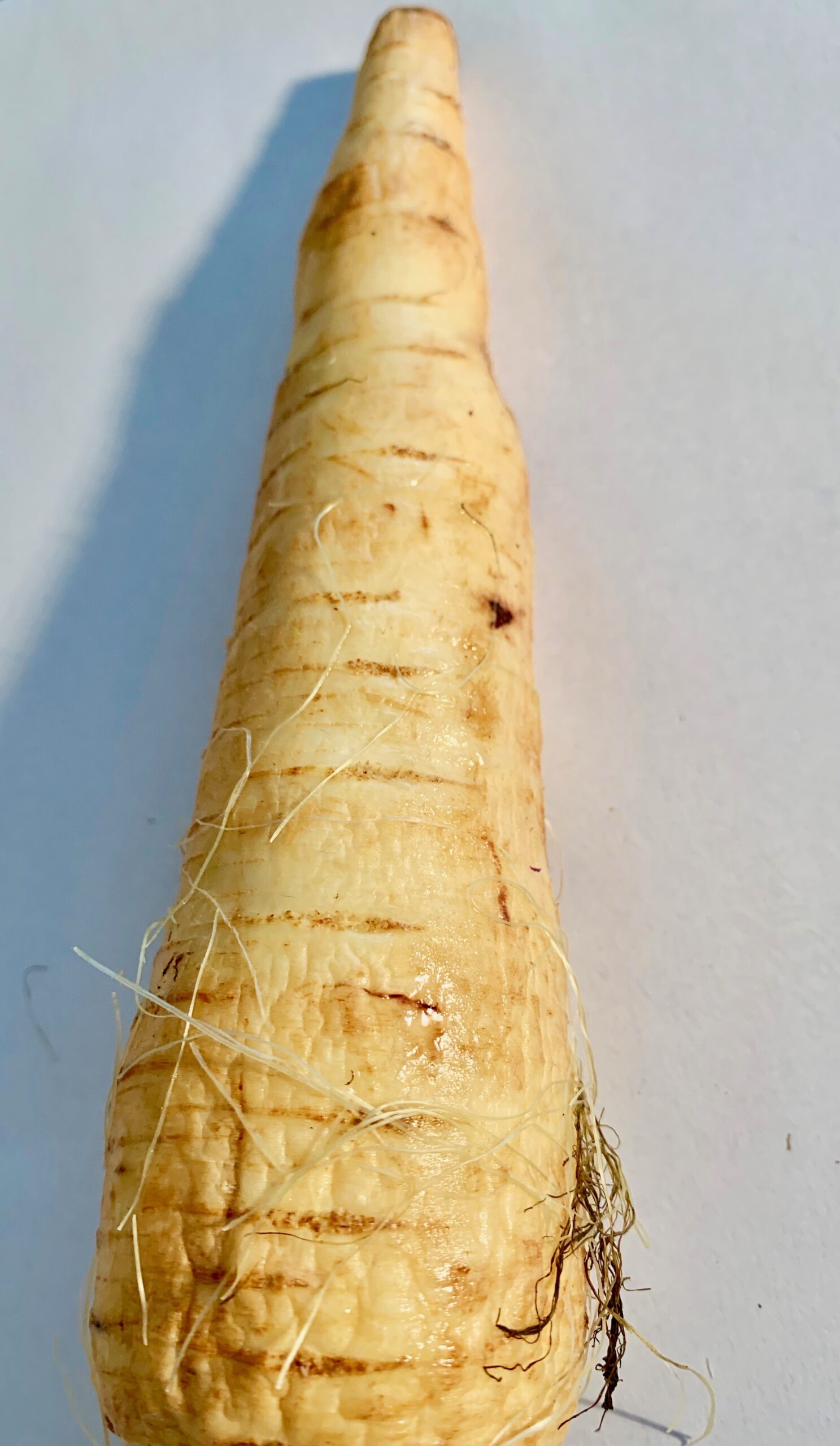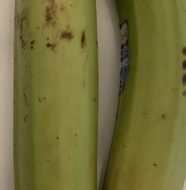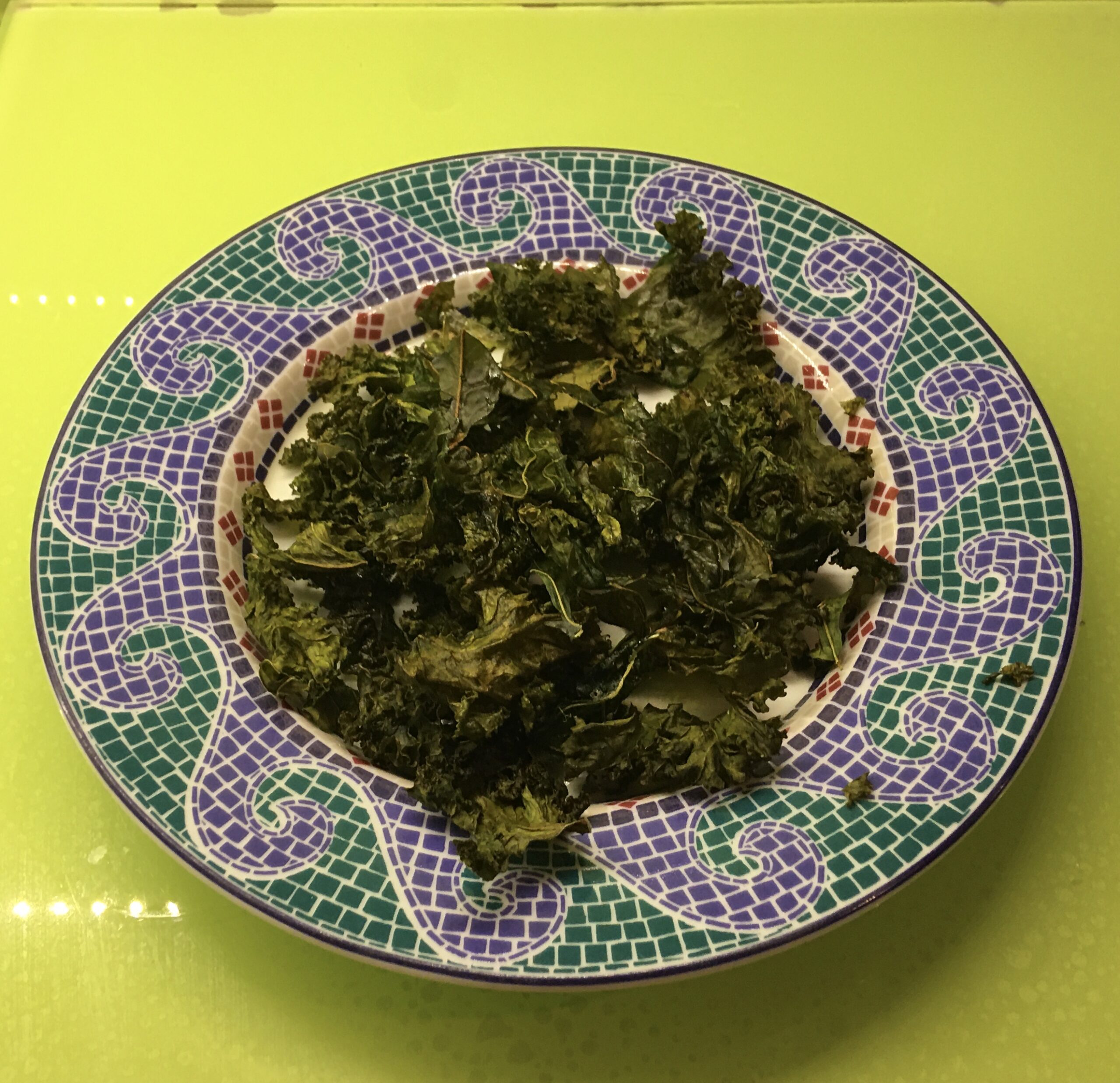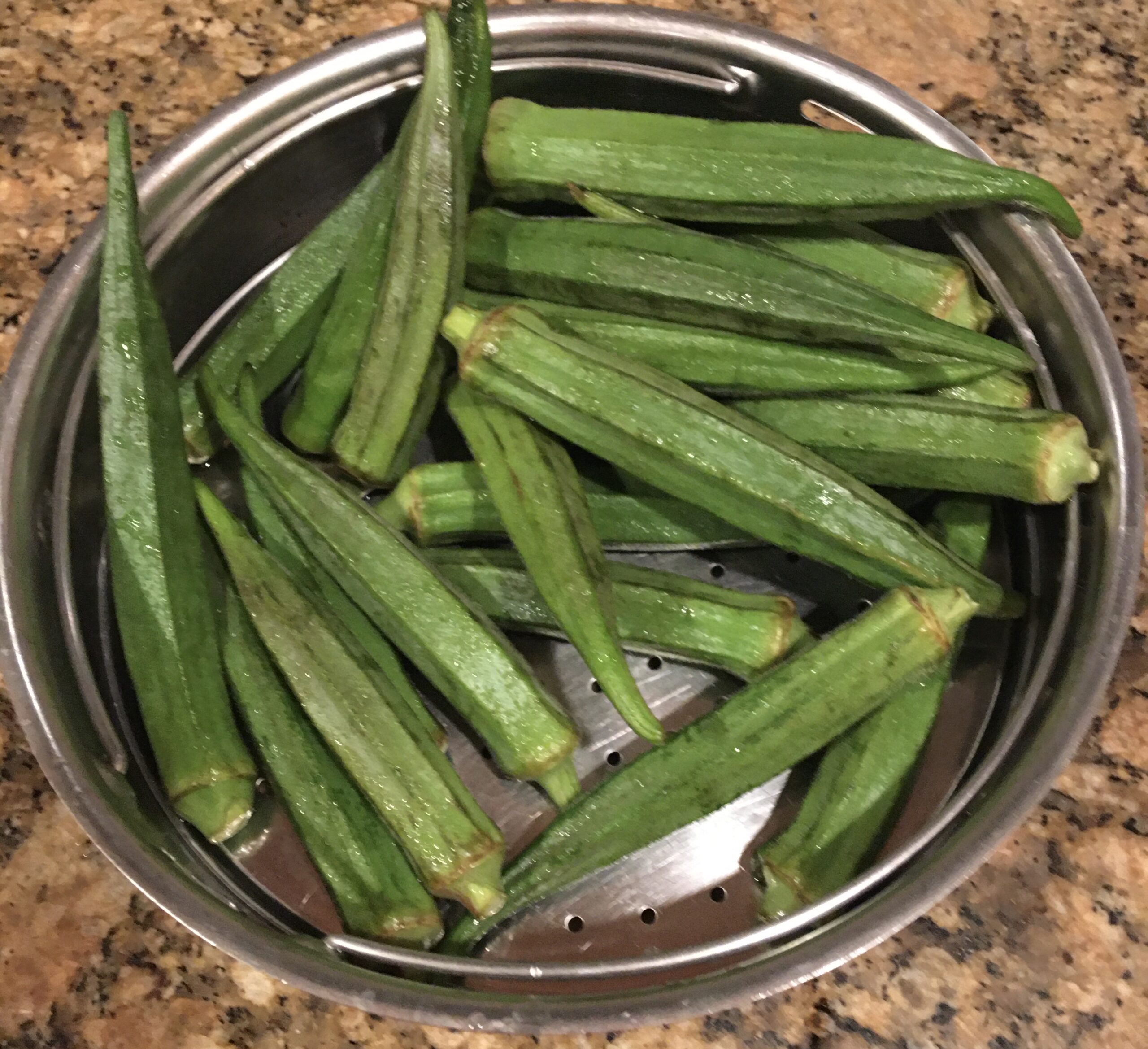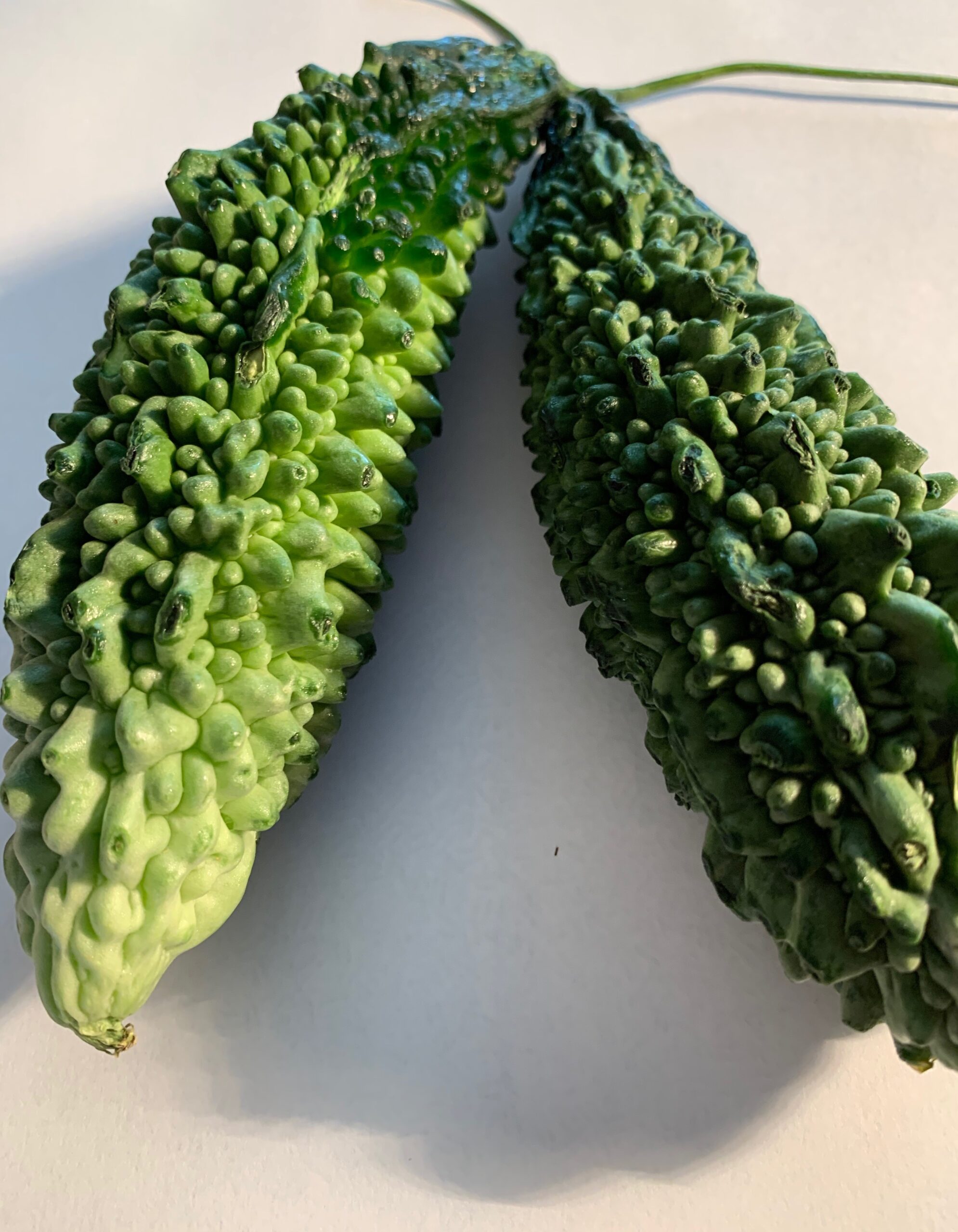Tapioca is a versatile tuber derived from the Cassava native to Brazil. (scientific name: Manihot esculenta) . It has a nutty earthy flavor that is well suited for cuisines where it grows in the Caribbean islands. Cassava slices are excellent for frying into chips like potato chips – crisp and delicious, making them a popular snack in Kerala, Africa, and S.America. It is gluten, grain, and nut-free making it a potential food for people with allergies. Substituting coconut oil with canola or sunflower oil extends their shelf life. Tapioca is also steamed and eaten by farmworkers as a substitute for rice.
Buying & storing: Tapioca/Yuca is available in the grocery section of a supermarket in the ethnic section and in some Latin & Caribbean stores. The root is covered in wax to preserve the outer skin as it travels. Select those that are firm and free from blemishes and soft spots. The roots should have a clean fresh scent and snowy white center when cut open. You can also find frozen peeled and cut yuca. Unpeeled cassava/yuca should be stored in a cool dry place like the pantry, where it will last one week. once the tapioca is peeled it should be stored immersed in water (up to 2 weeks) or frozen drey for 3 months.
History Tapioca is a starch extracted from the cassava root, more commonly known as yuca to English speakers. Native to northern Brazil, cassava now grows worldwide, particularly in South America, Asia, and Africa. The cassava root, or underground part of the cassava shrub, grows well in hot, humid climates with low-nutrient soils. In fact, it’s considered one of the world’s most drought-tolerant crops, according to the U.S. National Library of Medicine National Institutes of Health – and can usually be harvested within a year of planting. After harvest, cassava roots are treated to remove toxins, then peeled, ground, and boiled. A starchy liquid is then withdrawn, and once the water has evaporated, the starch goes into processing to produce various forms of tapioca: powder, flakes, sticks, or translucent spheres typically called “pearls.”
Story: Tapioca chips are called ” MOHOGO” in Nairobi Kenya. Our chauffeur John Onyango introduced these chips to my children and us during our stay in the 80s. They were freshly grated, fried, and served as street food in the market. Recently my grandkids enjoyed the bubble tea drink made of Tapioca pearls in the Montgomery mall in Maryland USA.
Tapioca Nutrition Facts
| GI =74 GL =13 | Minerals | Vitamins |
| Energy 108kcal(5%) | Sodium 9mg (0.5%) | Folates 23mcg (6%) |
| carb 27.88g (21%) | Potassium 816mg (17%) | Niacin 0.552mg (3.5%) |
| Protein 1.53g (3%) | Calcium 17mg (2%) | Pantothenic acid 0.314mg (7%) |
| Fat 0.17 g (0.5%) | Copper 0.178mg (20%) | Pyridoxine 0.293mg (23%) |
| Cholesterol 0 mg (0%) | Iron 0.54mg (7%) | Riboflavin 0.032mg (2.5%) |
| Fiber 4.1g (11%) | Magnesium 21mg (5%) | Thiamin 0.112mg (9.5%) |
| Beta Carotene 83mcg | Manganese 0.397mg (17%) | Vitamin C 17.1 mg (28.5%) |
| Phosphorous 55 mg ( 8%) | Vitamin A138IU (5%) | |
| Selenium 0.7mg (0.5%) | Vitamin E 0.35 mg (2%) | |
| Zinc 0.24mg (2%) | Vitamin K 2.3mcg (3%) |
Tapioca Health benefits
- Boost energy: Tapioca has plenty of carbohydrates that get sucrose converted to glucose to provide plenty of energy and increase satiety.
- Enrich red blood cells: Tapioca is fortified with iron and copper, which are both essential for blood health for healthy circulation, enough oxygen, and keeping anemia at bay.
- Keep digestion in check: Good digestive fiber is present in abundance in tapioca, which keeps stomach and digestion problems away right from cleansing the gut to keeping cancer at bay.
- Aid bone and mineral density: this tuber is fortified with protein and vitamin K, calcium, and iron that help in protection and bone development.
- Eliminate trans fats and sodium: low sodium content suitable for those with high blood pressure. No trans fat or cholesterol and gluten-free. Tapioca flour can be used as a gluten substitute in cooking and baking and as a healthy grain.
- Prevent Alzheimer’s: vitamin K keeps neural pathways active and engaged and eliminates free radicals that can cause a breakdown of brain tissue.
- Reduce birth defects: Tapioca contains significant amounts of B complex vitamins and folic acid. Adequate amounts of these vitamins have been directly connected to reducing the chance of neural tube defects in infants.
- Regulate Blood pressure: Tapioca contains potassium a vasodilator that reduces the tension and stress in the blood vessels and arteries. K is also the key for fluid balance in the body and when it is in proper balance with sodium all the fluid exchanges can be smooth in the body, further boosting metabolic efficiency and energy.
- Source of vegetable protein: provides ample amounts of protein to develop muscles. growth and healing.
- Support weight gain: with high carb. content (1 cup= 45% RDA) in the form of Sucrose and Amylose; it is easy to add bulk and calories without unhealthy cholesterol and saturated fat
- Word of Caution: Cassava produces cyanide an extremely poisonous compound for humans. It can never be eaten raw. It can be poisonous if not prepared and cooked properly.
- https://www.organicfacts.net/health-benefits/other/tapioca.html
Method to Fry Tapioca Chips
- Peel skin off tapioca with a sharp peeler.
- Slice tapioca 1/2″ thick using a slicer or food processor. (5 min)
- Spread on paper towels to dry. (2 min)
- Heat the oil in a deep frying pan to smoking hot (350 F). (2 min)
- Reduce heat; drop a batch of tapioca slices in hot oil.
- When the oil froths up and bubbles disappear, flip the chips with a slotted ladle. (2 min)
- Dissolve the salt in 1/4 cup water; sprinkle 2 tsp. on top of chips in oil.
- A bubbling sound will be heard; wait for it to subside.
- Flip the chips over and remove from hot oil. (2 min)
- Drain on paper towels to allow cooling. (2 min)
- Store in an air-tight container.
Serve Tapioca Chips as a snack or with Quinoa or Brown Rice with Lentils.
Tips
A paste of turmeric & water, smeared on tapioca slices, gives a golden color to chips
Variation : Sprinkle red chili or garlic powder on the fried chips for a unique flavor
Reduce heat before sprinkling saltwater
references
https://www.femina.in/wellness/diet/the-health-benefits-of-tapioca-43952.html
https://www.thespruceeats.com/how-to-peel-cut-and-prepare-yuca-2138100

